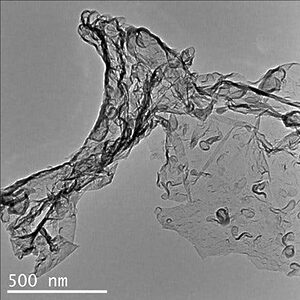
In an absolutely remarkable discovery, Professor Yun Hang Hu, along with associates at Michigan Technological University, have discovered a chemical reaction which can turn the alarmingly ever increasing greenhouse gas carbon dioxide into a solid-state semiconductor (Li2CN2), while also releasing energy in the process. You couldn’t ask for something better.
CO2 is an extremely pesky compound for researchers, because of its extremely stable state, which typically warrants large amounts of energy for chemical reactions to occur. Thus in the event that fossil fuels were used to transform CO2 into useful materials or simply render it inactive, more CO2 would be released than contained, defeating the purpose.
However, the team of researchers have managed to find a relatively low-energy, heat-releasing reaction between carbon dioxide and Li3N at 330 degrees Celsius. Immediately 1,000 degrees Celsius was released in the surroundings, leading to the formation of two compounds:: amorphous carbon nitride (C3N4), a semiconductor; and lithium cyanamide (Li2CN2), a precursor to fertilizers.
“The reaction converts CO2 to a solid material,” said Hu. “That would be good even if it weren’t useful, but it is.”
Converting CO2 into useful energy or materials, while at the same time reducing greenhouse gas emissions, for many is the forefront of their scientific ambitions. Recently, a range of technological innovations have been developed in this respect, like a highly absorbent CO2 sponge or a solar powered device which converts CO2 into fuel.






